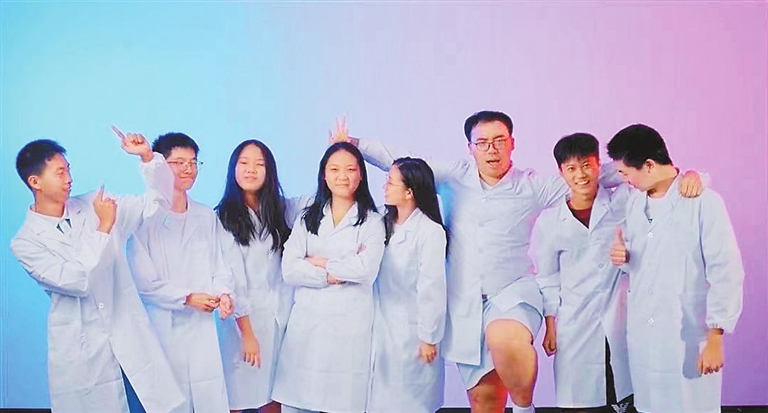
A team of eight students from Shenzhen Yucai Middle School has managed to restore the ancient murals in Dunhuang, Northwest China’s Gansu Province, using Escherichia coli (E.coli), which earned them a silver prize at the 2021 International Genetically Engineered Machine competition (iGEM). The team surveyed the status quo of the restoration of the murals before designing their project. “The murals in Dunhuang are suffering different extents of abrasions, which are mostly irreversible,” said Wang Rui, leader of the team. “And it basically takes more than 96 hours to restore a piece of mural in a traditional way. Our project has managed to find a more efficient and productive way of restoring the murals using a commonly-seen bacteria named E.coli.” The team has developed a device which contains two different plasmids, according to Li Zejun, a team member who is in charge of the major experiment of the project. One of the plasmids contains two components. They can produce a phage that can be activated by blue light. The other plasmid contains a fusion and a color protein, which can form biological films with different colors on the surface of murals and will be turned into a mineral layer by being reacted with calcium ions. The film with the bacteria will be converted into a gel-like substance. The substance will later be mixed with hydrogels and then the mixture will be applied to the surface of the murals to form the mineral layer. Once the layer is formed, the superfluous gel will be removed and the mural is dried and disinfected after the restoration. The judges spoke highly of the project, which has managed to use new technologies to restore and renew the ancient artworks, and saw it as an outstanding example of the application of the biological films. According to the team members, all the experiment procedures of the project were finished in the biology laboratory at their school. The lab is established by Zhang Jiajian, director of the information center of Yucai Education Group, and can provide all the required equipment for synthetic biological experiments, including high-speed centrifuge and dry baths. “I was fully amazed by biology and experienced what a real academic research project is like,” said Wang. “I have also learned some biological terms and how to write academic reports from the project.” The iGEM competition is one of the biggest and most influential international academic competitions in the field of life science. It was launched by the Massachusetts Institute of Technology in the United States in 2003 and has been held for 18 consecutive years. This year’s competition had several categories related to synthetic biology, including biological resources, environment governance, medical monitoring, medicine development, food and nutrition, and new materials. Participating teams had six months to prepare for their projects and carry out relevant experiments. They also needed to write a report in English, launch a website to introduce the report and give a presentation in English to a jury that included leading scientists and entrepreneurs. (Wang Haolan) | 
